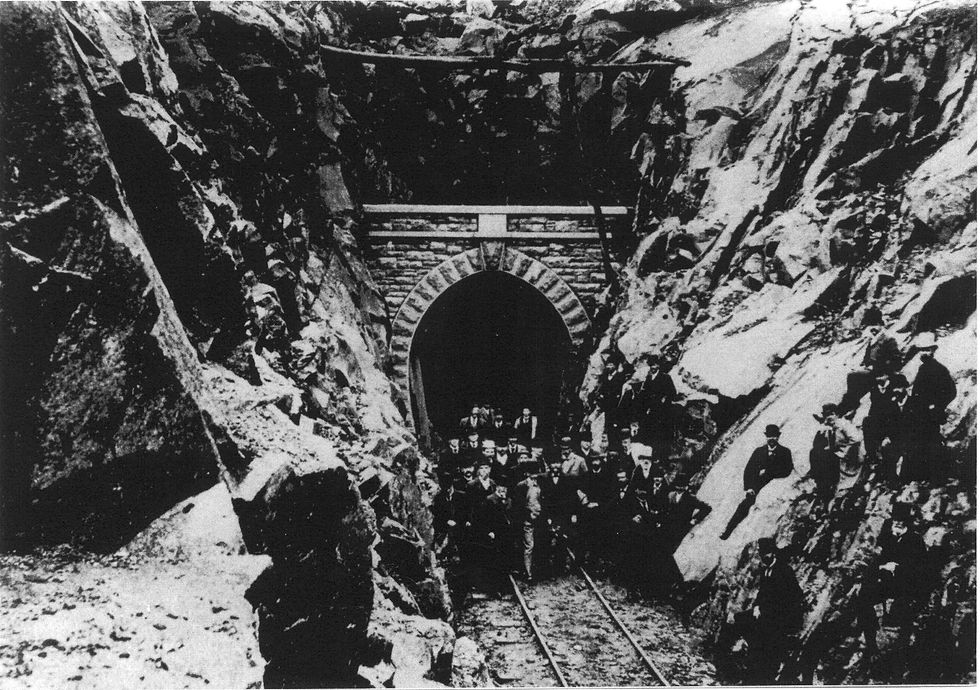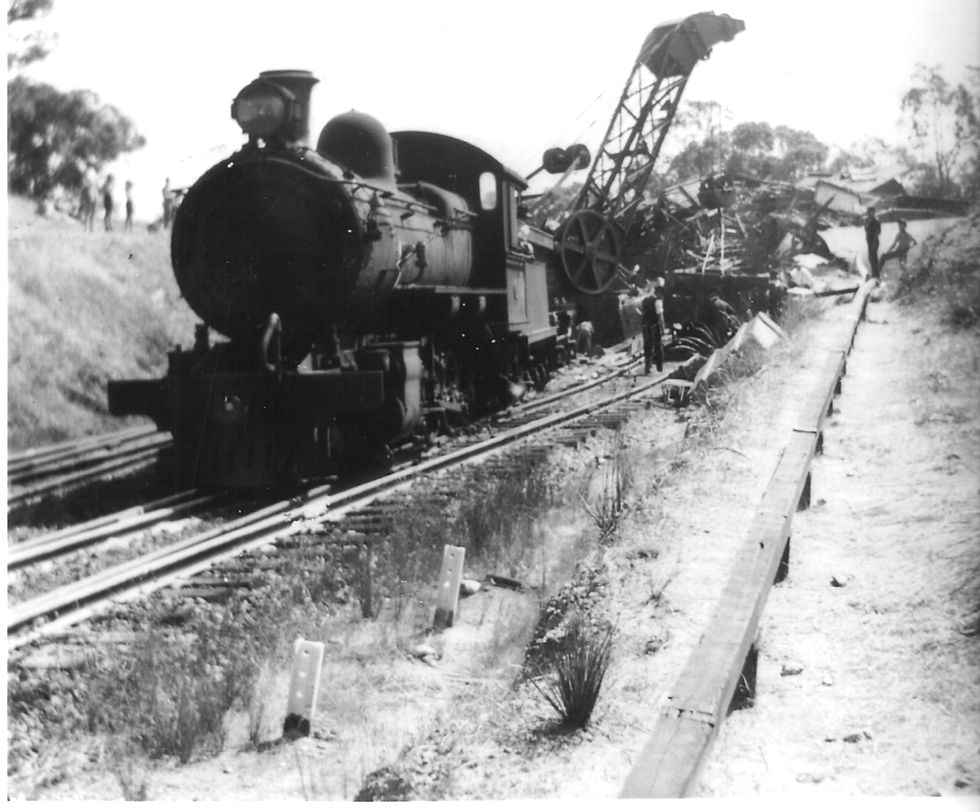The Swan View Tunnel is part of what is called the Eastern Railway Deviation along with three railway bridges and one wooden trestle bridge enclosed in a dirt embankment. It was constructed by the Government of Western Australia in between 1894 and 1896.
Prior to the construction of tunnels and the sinking of the Subiaco railway station in 1999, the Swan View Tunnel was the only tunnel on the Western Australian railway network.
Swan View Tunnel was built on an alignment which replaced the original Eastern Railway passing through Smiths Mill, (now Glen Forrest), and Mundaring. The project to build the new line, including the Swan View Tunnel, was managed by the Western Australian Government Railways Engineer-in-Chief, C. Y. O'Connor. The tunnel is 340.7 metres in length.

Work began in 1894, with the two bores from both ends meeting on 18 April 1895. The tunnel opened on 22 February 1896. The unstable nature of the jointed granite, along with clay seams, caused difficulties during construction of the tunnel. A masonry-lined face prevented rock falls but reduced the inner diameter.
The tunnel's small diameter combined with the steep gradient caused smoke accumulation. Incidents involving near-asphyxiation of train crews started in 1896 and continued throughout the tunnel's operating life. The first serious incident of this nature was in 1903.

Opening of the Tunnel in 1896
In December of that year the driver John Ross fainted and fell off the train whilst it was heading east, and the fireman didn’t notice that the driver was missing until they reached the other side of the tunnel. The driver was unharmed.
As time went on the tunnel gained a bad reputation with the drivers and firemen who were frequently overcome by noxious fumes and heat, and it was called “The Black Hole”. They went to great lengths to reduce the effects including lying on the floor with wet hessian bags placed over their heads!
In November 1942 two locomotives were pulling a train through the tunnel when the driver and firemen on both locomotives were overcome by the heat and fumes which caused the train to stall and travel back down the hill towards Swan View where the station master routed the train onto a spur line. One of the drivers Tom Beer was killed and debris from the wrecked train was spread across both tracks blocking the line.

Photograph after the 1942 derailment

View from Eastern Portal
An enquiry confirmed that the tunnel required ventilation but what to be done? Various options were looked at including blasting off the top of the tunnel! As this was during war time the resulting deviation for the “up” route was not completed until November 1945.
By the 1950s bus travel between Midland and the villages in the hills became more popular and in 1958 the Eastern Railway route between Midland and Mundaring closed.
In 1988 the tunnel was re-opened and became part of the Railway Reserve Heritage Trail and is used regularly by walkers cyclists and horse riders.
When did you last walk though or alongside the tunnel? There is very little space in the tunnel. When walking through, imagine a train whizzing through as you flatten yourself against the sides of the tunnel.

very good information my class is writing about this